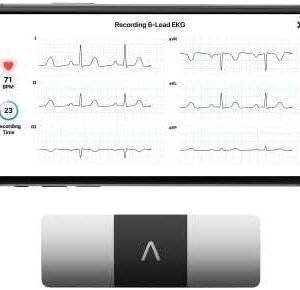The integration of artificial intelligence (AI) into diagnostic processes marks a pivotal transformation in the landscape of healthcare, heralding an era characterized by enhanced accuracy, efficiency, and cost-effectiveness. As healthcare systems worldwide grapple with rising expenses and the demands of an aging population, AI-powered diagnostics emerge as a formidable solution, promising to streamline clinical workflows while maintaining the highest standards of patient care. By leveraging machine learning algorithms and vast datasets, these advanced diagnostic tools facilitate rapid and precise identification of diseases, thereby reducing unnecessary interventions and optimizing resource allocation. This article delves into the mechanics of AI-driven diagnostic technologies, their potential to drastically lower healthcare costs, and the implications for stakeholders across the medical continuum, from practitioners to patients. Through a detailed examination of current applications and future prospects, we aim to illuminate how AI can revolutionize not only the practice of medicine but also the financial framework of healthcare delivery.
Table of Contents
- AI-Powered Diagnostics: Transforming Clinical Decision-Making Processes
- Cost-Benefit Analysis of Implementing AI Tools in Healthcare Systems
- Enhancing Diagnostic Accuracy through Machine Learning Algorithms
- Strategies for Integrating AI Diagnostics into Existing Healthcare Frameworks
- The Conclusion
AI-Powered Diagnostics: Transforming Clinical Decision-Making Processes
The integration of artificial intelligence in diagnostics offers a paradigm shift in the way healthcare providers approach clinical decision-making. By automating the analysis of complex medical data, AI algorithms can identify patterns and anomalies with unparalleled precision. This enables healthcare professionals to make informed decisions rapidly, reducing the time from diagnosis to treatment initiation. Key benefits of AI-powered diagnostics include:
- Enhanced Accuracy: Minimizing human error through data-driven insights.
- Timely Interventions: Facilitating quicker identification of life-threatening conditions.
- Resource Optimization: Allowing for better allocation of clinical resources.
Moreover, AI models can continuously learn from new data, improving their diagnostic capabilities over time. As a result, patient outcomes enhance, and overall healthcare costs decline. A recent study illustrates this transformation, highlighting the following reductions in costs associated with AI diagnostics:
| Diagnosis Type | Cost Reduction (%) |
|---|---|
| Cardiac Conditions | 35% |
| Oncological Assessments | 28% |
| Infectious Diseases | 20% |
Cost-Benefit Analysis of Implementing AI Tools in Healthcare Systems
Implementing AI tools in healthcare systems can lead to significant cost savings when weighed against the potential benefits. AI-driven diagnostics streamline workflows by automating repetitive tasks, thereby reducing the workload on healthcare professionals. This not only enhances efficiency but also minimizes human errors, leading to faster and more accurate patient assessments. Key factors contributing to cost reduction include:
- Decreased operational costs due to automation.
- Shorter patient wait times, improving satisfaction and enhancing the capacity of healthcare facilities.
- Early disease detection, resulting in reduced treatment costs over time.
In a comprehensive cost-benefit analysis, measuring upfront investments against long-term savings reveals a favorable outcome for healthcare providers. The implementation costs can be offset through improved patient outcomes and operational efficiencies. Below is a visual representation of potential savings and costs associated with AI implementation:
| Item | Estimated Cost (Annual) | Estimated Savings (Annual) |
|---|---|---|
| AI Tool Implementation | $150,000 | N/A |
| Training Staff | $30,000 | N/A |
| Operational Efficiency Improvements | N/A | $200,000 |
| Reduction in Misdiagnosis | N/A | $100,000 |
| Total | $180,000 | $300,000 |
Enhancing Diagnostic Accuracy through Machine Learning Algorithms
Machine learning algorithms have emerged as a transformative force in the field of diagnostics, significantly enhancing the precision of disease detection and classification. By analyzing vast datasets, these algorithms can uncover patterns often imperceptible to the human eye, leading to improved diagnostic outcomes. Key applications include:
- Image Analysis: Automated interpretation of medical imaging, such as MRI and CT scans, which reduces the likelihood of misdiagnosis.
- Data Integration: Combining genomic data with clinical records to provide personalized diagnostic insights.
- Predictive Analytics: Forecasting disease progression and patient responses to treatments, allowing for timely interventions.
Moreover, the implementation of machine learning not only increases diagnostic accuracy but also contributes to cost-efficiency within healthcare systems. The capacity to analyze large datasets swiftly allows for rapid decision-making, leading to:
| Benefits | Impact |
|---|---|
| Reduced Readmission Rates | Minimized healthcare costs and improved patient outcomes. |
| Decreased Diagnostic Errors | Lowered expenses related to unnecessary tests and treatments. |
| Streamlined Operations | Enhanced efficiency in clinical workflow, leading to reduced labor costs. |
Strategies for Integrating AI Diagnostics into Existing Healthcare Frameworks
To successfully incorporate AI diagnostics into existing healthcare ecosystems, it is crucial to ensure seamless interoperability between AI systems and current healthcare technologies. This involves not only selecting compatible software solutions but also investing in training programs for healthcare professionals. A comprehensive strategy may include:
- Assessment of Current Infrastructure: Evaluate existing technologies to identify integration points and gaps.
- Stakeholder Engagement: Collaborate with clinicians, IT staff, and administrators to develop a cohesive plan tailored to their needs.
- Iterative Implementation: Introduce AI diagnostics in stages, monitoring outcomes and adjusting as necessary.
Moreover, establishing robust data governance policies is critical for maintaining patient privacy and ensuring the quality of AI-generated insights. This can be achieved by:
- Developing Standardized Protocols: Create uniform guidelines for data collection, storage, and sharing to ensure consistency.
- Implementing Continuous Training: Regularly update staff on best practices for using AI diagnostics responsibly.
- Monitoring Ethical Standards: Establish oversight committees to address ethical concerns and promote transparency in AI decision-making.
| Strategy | Impact on Cost Reduction |
| Interoperability | Reduces redundant tests and speeds up diagnosis |
| Stakeholder Engagement | Increases buy-in and usage, optimizing resource allocation |
| Data Governance | Minimizes legal risks and enhances patient trust |
The Conclusion
the integration of AI-powered diagnostics into the healthcare sector represents a transformative opportunity to enhance both efficiency and cost-effectiveness. By leveraging advanced algorithms and machine learning techniques, healthcare providers can improve diagnostic accuracy, streamline workflows, and ultimately reduce the financial burden on both patients and institutions. As we continue to navigate an increasingly complex healthcare landscape, the potential of AI to drive meaningful change cannot be overstated.
Looking ahead, it is crucial for stakeholders—including healthcare professionals, policymakers, and technology developers—to foster collaborative efforts aimed at addressing the challenges associated with implementation, data security, and ethical considerations. By prioritizing robust regulatory frameworks and investing in continuous education, we can ensure that AI-powered diagnostics not only advance patient care but also contribute to a sustainable healthcare model that is prepared to meet the demands of the future. The journey towards a more efficient, tech-driven healthcare system is underway, and the era of AI-enhanced diagnostics is just the beginning of what promises to be a remarkable evolution in medical practice.





